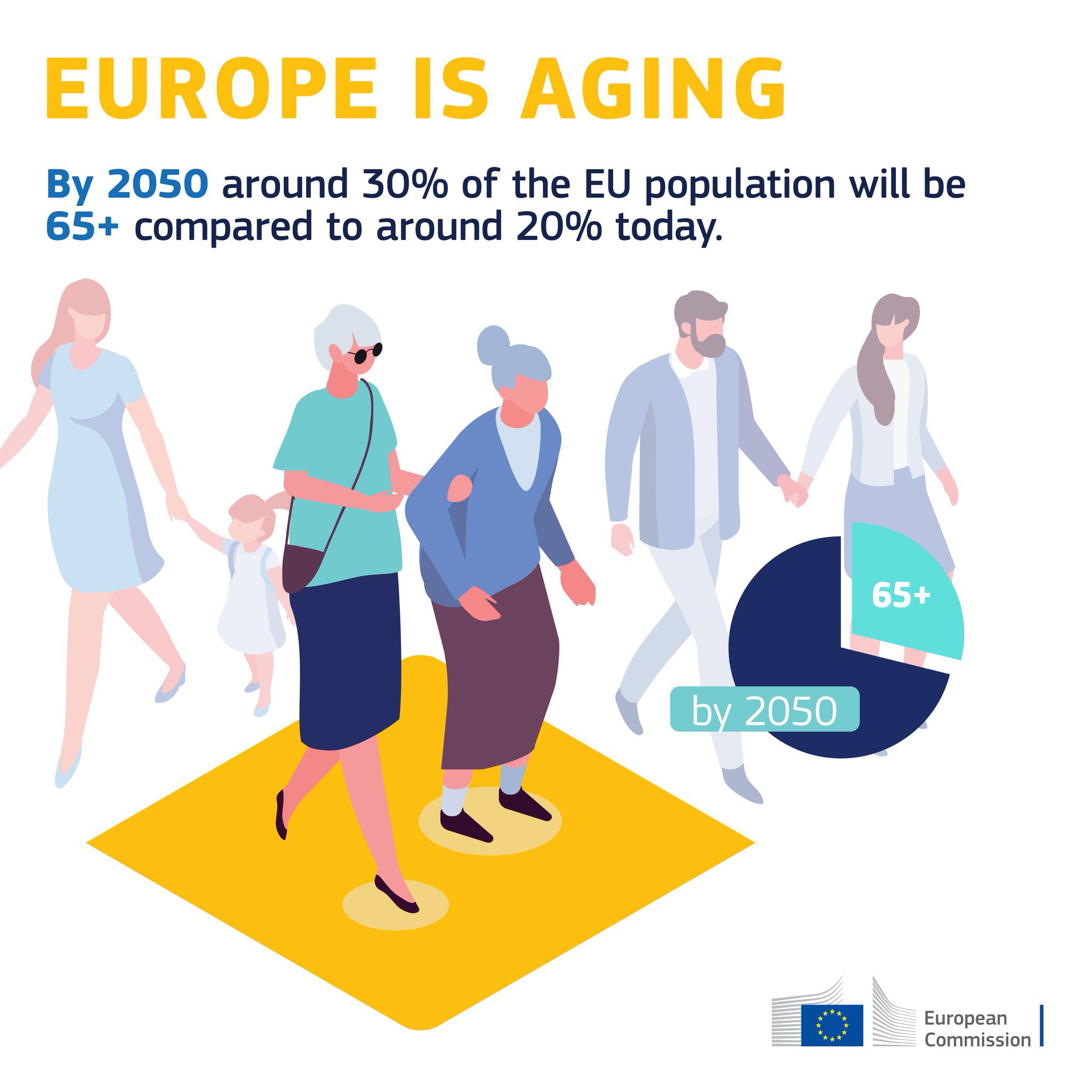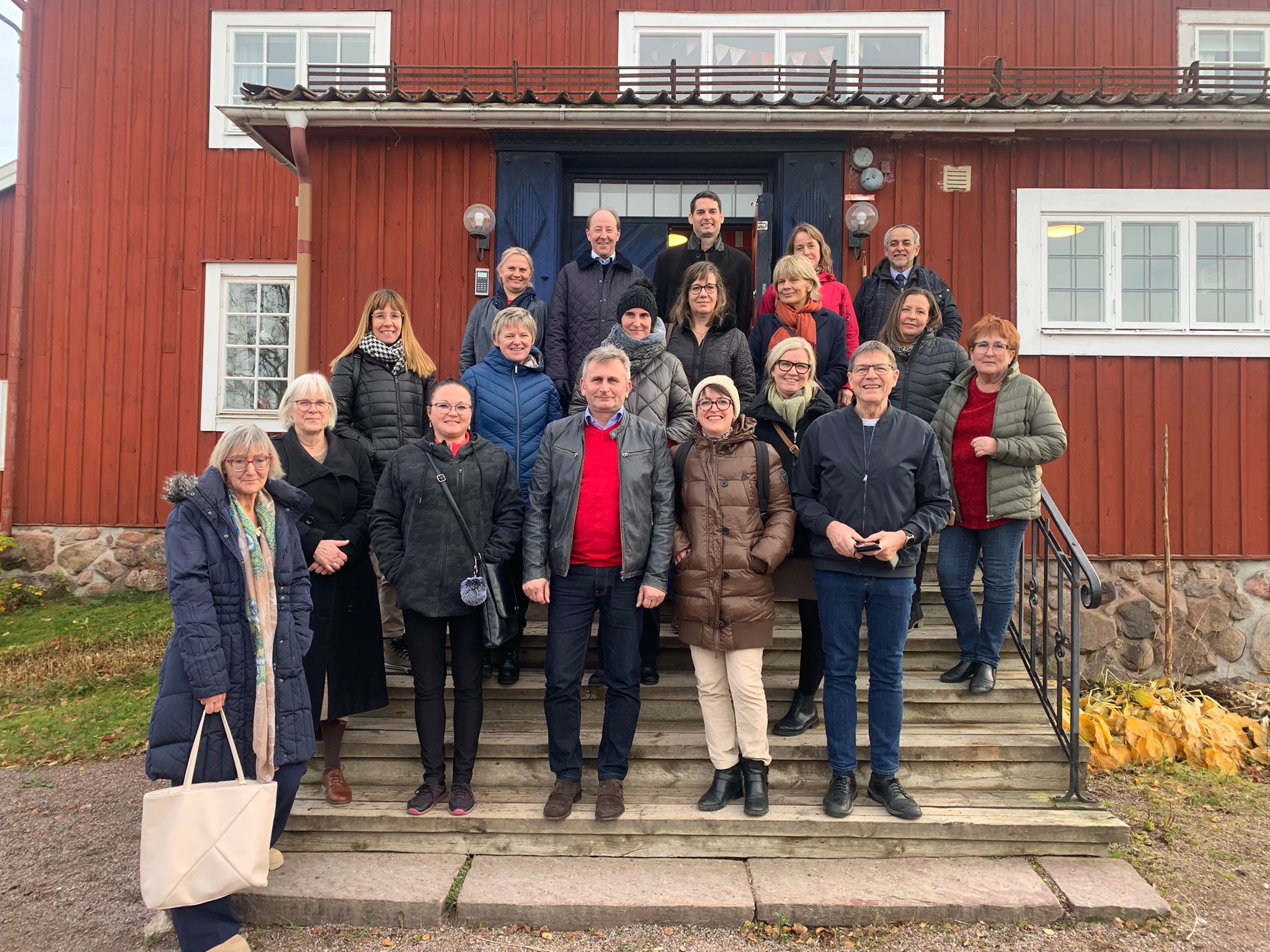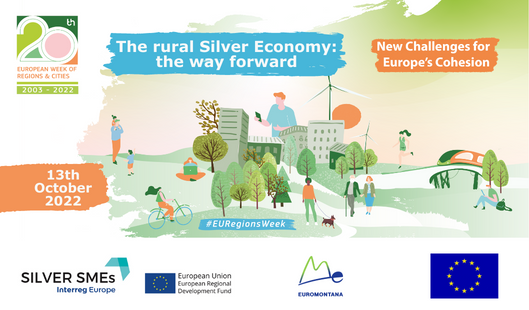The OECD recently discussed the issue of the well-being of rural older adults in its report “Rural well-being: geography of opportunities”, published in October 2020. This report reaffirms the opportunities arising from the Silver Economy in rural areas and determines how these can be better exploited across three types of rural regions.
Ageing: a reality to be geographically nuanced
How rural areas can be more attractive and increase the well-being of local populations? According to the OECD’s report, a way to do so is to focus on two important social groups: the young and the older generation. Why older adults? Older people represent a large part of the rural population in OECD countries with “nearly 30% of the population in European regions outside of metropolitan areas is expected to be 65 years old or older by 2050”.
However, demography is different from one region to another. The OECD stresses that the share of older adults in the population is even greater in remote regions. And that's what this new OECD report is all about: distinguishing between the different types of rural territories, their different challenges and opportunities. In this report, rural areas are classified as follows:
- Rural areas within the functional area of a city
- Rural areas outside the functional area of city but in close geographical proximity
- Rural remote areas
This classification is of interest for SILVER SMEs as the needs and solutions to put into place for rural older adults highly depends on the type of rural region they belong to. Such classification can apply to SILVER SMEs’ partner regions: the Province of Teruel, Spain, and the Dalarna Region, Sweden, would for example fit into the third category while Hauts de France Region, France, would better correspond to the second or first group. The consequences of this classification in terms of goods and services needed but also of regional policy actions can inspire partners in designing targeted Action Plans.
Ageing: opportunities for rural regions
 An ageing population does not necessarily mean a shrinking economy, says the OECD in its report. On the contrary, older adults have specific needs in terms of housing, mobility, care and more. The organisation therefore encourages rural regions to support the emerging Silver Economy sector, which can both increase the quality of life of older people and create new economic opportunities in territories where the local economy is contracting.
An ageing population does not necessarily mean a shrinking economy, says the OECD in its report. On the contrary, older adults have specific needs in terms of housing, mobility, care and more. The organisation therefore encourages rural regions to support the emerging Silver Economy sector, which can both increase the quality of life of older people and create new economic opportunities in territories where the local economy is contracting.
Facing the lack of services and goods in their region, rural seniors are in demand of such products. According to the European Commission, Europeans over 65 have a spending capacity of €3,000 billion and the sector therefore offers great development opportunities in the future.
The report from the OECD also stresses the importance of social innovation, as a tool to include older adults in rural communities and to support them in staying active. Older generations are valuable for rural areas and can offer their experiences and time to others, in particular young people and entrepreneurs. At the same time, social innovation can be a win-win solution for the well-being of rural communities: while it can help seniors to remain socially active, it can also help mitigate the lack of services for other social groups for instance with voluntary childcare, therefore also improving the well-being of young families.
Yet, to achieve these socio-economic transformations, the OECD alerts that other changes are needed. ICT tools and skills must for instance be developed and broadband coverage expanded in order to support entrepreneurs in designing innovative solutions and to allow users to enjoy them. Moreover, an enhanced well-being for older adults cannot be achieved without a shift in rural policies, says the OECD. Regional and local policymakers must therefore address the needs of their older population by reflecting on healthcare, mobility and connectivity.











